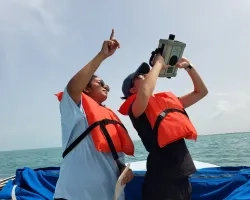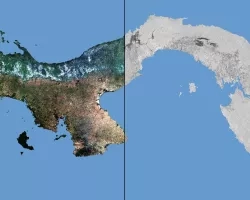Freshwater ecosystems contribute disproportionately to global biodiversity and ecosystem services but are highly threatened by climate change, drought, and unsustainable water use. In arid, semi-arid, and Mediterranean regions, landscape-scale conservation requires protection, management, and enhancement of the connectivity of dynamic wetland habitats through surface water, which is highly dependent upon climate variability and human-driven management. Water supply and its effective management are critical to wildlife and people in these arid and semi-arid regions, many found in western North America. Decision support for conservation and management of freshwater ecosystems is needed to balance competing needs. Managers must move beyond patch-based management to a network focus by including connectivity as a dynamic landscape property. Furthermore, due to the intense competition for water, managers need to make water management decisions based on their ability to achieve multiple benefits for the environment and ecosystem services for human populations. California’s Central Valley is a semi-arid region that is a nexus for water resources. Approximately 90% of the Central Valley’s naturally occurring wetlands have been lost and fragmented due to anthropogenic alterations of the landscape, yet the Central Valley remains a critical landscape for migratory waterbirds and freshwater dependent aquatic and terrestrial species through a system of managed wetlands and post-harvest flooded agriculture. Balancing multiple needs with water management in the Central Valley and maintaining habitat connectivity across multiple scales requires data for optimization that only satellite-based Earth Observations can provide. Spatially-explicit conservation prioritization can use these data to identify strategies to support landscape-scale decision-making to meet multiple objectives in the face of great uncertainty and multiple constraints. Our proposed project will take advantage of Earth Observation time-series and biological observations to help forecast and prioritize where to put water and when to optimize multiple-benefits across the large mosaic of California's Central Valley croplands and wetlands; a spatial extent required for the wide-ranging ecology of migratory waterbirds. We will assess habitat connectivity and its influences on multiple taxa as it changes over time within a year and under future scenarios. Remote-sensing is required to guide decision-making and will serve as a catalyst for coordinated large-scale water and wetland conservation and management. To fully support our decision-making collaborators, we will take advantage of the regular return interval of satellite data and state-of-the-art bioinformatics to develop a web-based decision support framework that can compile and evaluate the data developed from this project and provide ongoing updates through time. This project will develop and use multi-annual forecasts, as well as long-term projections (50 years), of the spatial and temporal availability of wetland habitats, wetland and open water dependent species, connectivity, biodiversity and groundwater recharge to prioritize and strategically create wetland habitat on the landscape as part of large-scale coordinated conservation using a decision-support application. Integrating the water and wetland habitat forecast models with species and ecosystem services distributions through a spatially-explicit conservation prioritization framework will provide the essential resources for improved, coordinated landscape-scale conservation decisions that optimize across multiple benefits.
Project


